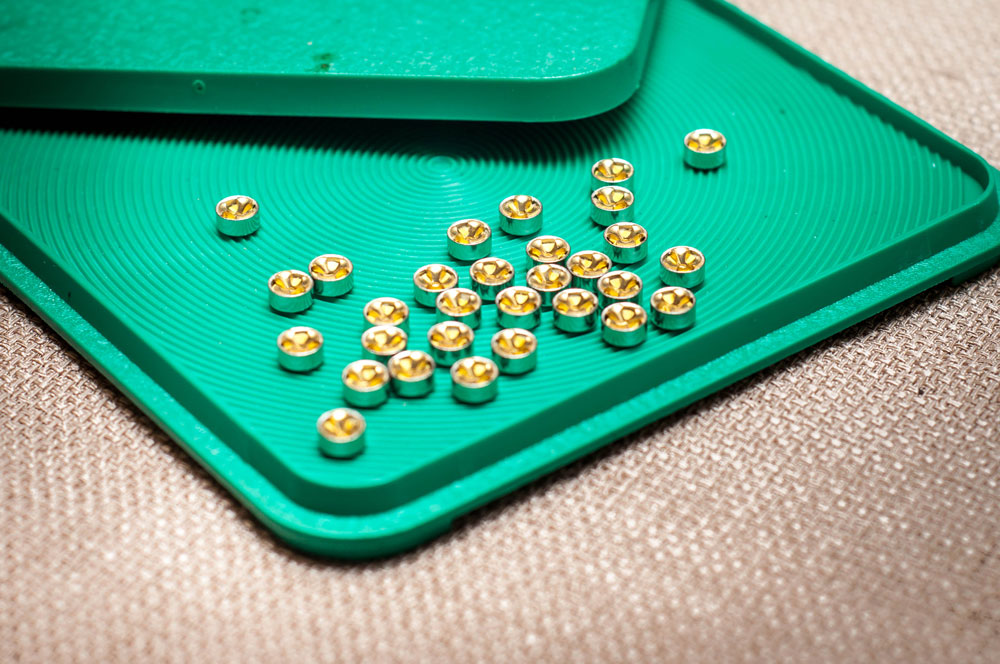https://gundigest.com/gear-ammo/reloading/primers-does-it-matter-what-you-use?By Patrick Sweeney -April 9, 2021
Do primers make that big a difference in your reloads? It all depends on how hot you're going.Does The Brand Of Primer Matter:
* General by-the-book loads, brands make little difference.
* Nearly any primer, even cheap ones, will not have much effect.
* Issues arise redlining loads.
* At this point, some primers can cause dangerous pressure spikes.
Do particular primers really matter? The short answer; yes and no.Average Loads: When Primers Don't Matter
If youíre using vanilla-plain loads, something in the middle of the range of powder weight and burn rate, in the middle of the pressure range, in the middle of standard bullet weight, no, it doesnít matter one whit.
The usual reason given to pay attention to primers is pressure control. As in, if you change primer brands, you might add several thousand PSI to your pressure (or, just as likely, lose several thousand PSI), and that could get you in trouble.
Letís take, for example, the .45 ACP with a bog-standard load, a lead 200-grain semi-wadcutter. Letís borrow from our good friends at Hodgdon and use their loading data chart, where we use 4.6 grains of 700X. That gets us 821 fps, which is right on the cusp of making major. The listed pressure is 12,100 CUP, which we canít translate directly to PSI, but is 5,000 under the max CUP for the .45 ACP. This load is running at 71 percent of maximum. We arenít straining anything. In this example, who cares if changing primers adds a couple of thousand CUP to the maximum pressure? If anything, it might make the 700X burn a little cleaner.

Now, letís up the ante. We use the same bullet, but we load for some performance, such as blasting bowling pins. We want some 950-plus fps here, so we go to a slower-burning powder. We settle on SR-4756, where 8.2 grains nets us 966 fps. If we change primers to one that boosts pressure, we go from 17,100 CUP to 19,100 CUP, which is more than max of the .45 ACP but well less than the .45 ACP+P pressure ceiling. Weíve boosted pressures but not so much that is actually a problem.
So, as long as you stay in the middle (at least here, in our .45 ACP example) you canít get in trouble with changing primers.
So, when does it matter? For one, it can matter in accuracy. Here you run into an individual preference, when a handgun shoots a given load accurately with a given primer. Or, more accurately, with one brand than with others. There is no way to predict such a situation. If you stumble upon one (say, your 9mm steel challenge gun shoots fantastic groups with a bullet/powder combo driven by the XYZ primer), you just accept it and stick with it.
Going Hot: When Primers MatterAnother situation occurs when you have pushed performance right to the red line. Letís take a different example.
Weíll load a .44 Magnum to the max for hunting. We take a Nosler 240-grain JHP bullet and load it over Hodgdon Longshot. (Again, Iím looking directly at the Hodgdon data.) They show the 240 maxing out at 1,331 fps over 12.1 grains of Longshot, at 34,500 PSI. They do not mention the primer, but letís assume, for the sake of our thought experiment that changing to a different primer can increase or decrease the pressure by 2,000 PSI. Do we really want to use something that now has a maximum average pressure of 36,500 PSI just from changing primers? Remember from the statistics chapter, the average means some (generally half) of them will be less, but half will be greater. Thus, itís possible that our new combo can have one round in a box that generate 38,000 PSI and one in a hundred that generates 40,000 PSI.
So, when you get close to the red line, pay attention to what happens to pressure signs (if you can see any beside sticky extraction), and donít switch primers ďbecause these are cheaperĒ or some other nonessential reason.
Editor's Note: This article is an excerpt from Reloading for Handgunners, 2nd Ed., available at GunDigestStore.com.